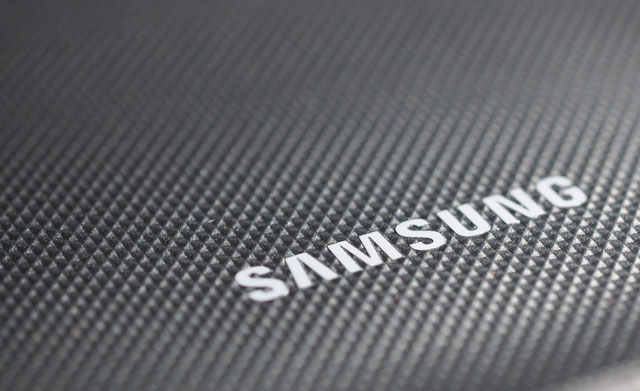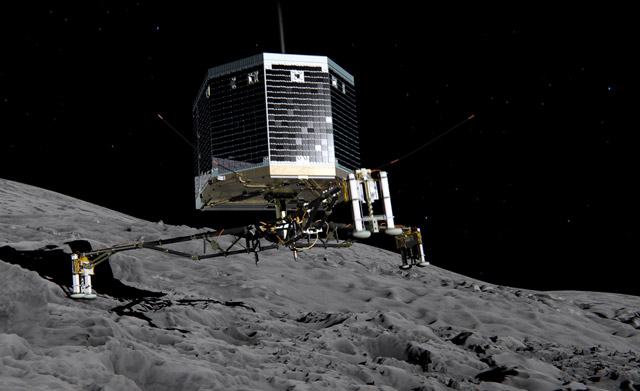
Samsung’s third-quarter results were just as bad as the company warned as tougher competition caused profits to tumble by 74% in its mobile business. Overall, the Korean electronics giant on Wednesday reported a 60% drop in company-wide operating profit — its fourth consecutive decline and its lowest since the second quarter of 2011. The company also recorded a 20% decline in revenue for the September quarter. Read more and more…
Google Glass is dead
Two and a half years after Google cofounder Sergey Brin unveiled Google Glass with a group of skydivers jumping from a zeppelin above San Francisco, the computer you wear on your face is falling to its death. It’s still not a finished consumer product. It’s not even close to being something people yearn for, at least not beyond the Glass Explorers who each paid $1 500 for early access. Read more…
How Voltaire invented social networking 300 years before Facebook and Twitter
Social networking isn’t really a modern phenomenon. Long before there was Facebook, Twitter or LinkedIn, there was the Republic of Letters — a vast and intricate network of intellectuals, linking the finest “philosophes” of the Enlightenment across national borders and language barriers. Read more…
Simple circuit could double cellphone data speeds
A relatively simple circuit invented by researchers at the University of Texas could let smartphones and other wireless devices send and receive data twice as fast as they do now. The circuit makes it possible for a radio to send and receive signals on the same channel simultaneously — something known as “full duplex” communications. That should translate to a doubling of the rate at which information can be moved around wirelessly. Read more…
How a super chilled telescope will look back at the dawn of the universe
To see back in time, you need a massive telescope — one big enough to capture light from when the first galaxies were formed 13,5bn years ago. Astronomers are clamouring to see this light, so Nasa is obliging them by building the James Webb Space Telescope. The Webb will operate a million miles from Earth in a gravity-tethered spot called the L2 point where the telescope can get cold enough that its own heat won’t drown out faint traces of infrared radiation — once-visible light that’s been stretched out by the universe’s expansion. Read more…
The last unmapped places on Earth
In 1504, an anonymous mapmaker — most likely an Italian — carved a meticulous depiction of the known world into two halves of conjoined ostrich eggs. The grapefruit-sized globe included recent breaking discoveries of mysterious distant lands, including Japan, Brazil and the Arabian peninsula. But blanks remained. In a patch of ocean near Southeast Asia, that long-forgotten mapmaker carefully etched the Latin phrase Hic Sunt Dracones — “Here are the dragons”. Read more…

What’s next for the Rosetta mission and comet exploration
Somewhere dark and icy on a comet 320m miles away, the history-making, comet-bouncing Philae spacecraft is sleeping. Its batteries are depleted and there isn’t enough sunlight to recharge. But while the lander finished its primary job, collecting invaluable data on the surface of comet 67P/Churyumov-Gerasimenko, the Rosetta mission is far from over. For many scientists, the excitement is just beginning. Read more…
How 3D printing is revolutionising medicine
In February 2012, a medical team at the University of Michigan’s CS Mott Children’s Hospital in Ann Arbor carried out an unusual operation on a three-month-old boy. The baby had been born with a rare condition called tracheobronchomalacia: the tissue of one portion of his airway was so weak that it persistently collapsed. This made breathing very difficult, and it regularly blocked vital blood vessels nearby, including the aorta, triggering cardiac and pulmonary arrest. The infant was placed on a ventilator, while the medical team set about figuring out what to do. Read more…
The smartest cities in the world
Over the past several years, the idea of the being “smart” has emerged as a key mechanism for cities to find innovative solutions to the challenges that they are facing. Increased demand for infrastructure, housing, transportation, jobs, energy, food and water are all straining city governments and infrastructure, as people around the world flock to urban centres in hopes of a better life and more opportunity. For many years, the push to create smarter cities was led by technology companies looking for uses (and buyers) for their products. But in recent years, cities have begun to think more holistically about what being a smart city could mean, and have innovated new ways to modernize how a city serves its citizens. Read more…
How the Pentagon’s Skynet would automate war
Pentagon officials are worried that the US military is losing its edge compared to competitors like China, and are willing to explore almost anything to stay on top — including creating watered-down versions of the Terminator. Due to technological revolutions outside its control, the US department of defence anticipates the dawn of a bold new era of automated war within just 15 years. By then, they believe, wars could be fought entirely using intelligent robotic systems armed with advanced weapons. Read more…




